LEARN A HOLGORSEN PLAY: Mesh and Shallow Cross
Getting into the preferred man-coverage answers for Nebraska’s new OC
PROGRAMMING NOTE: This is the third in an offseason series breaking down some of the favorite concepts new Nebraska offensive coordinator Dana Holgorsen has utilized at previous stops. While it’s not known exactly what style of offense Holgorsen will be running at NU, he has some consistent concepts he’s carried with him throughout his play-calling career that are strong bets to be on Nebraska’s 2025 playsheet. New entries will appear sporadically throughout the offseason.
Previous entries: Y Cross, Four Verts and “Storm”
I want you to think back to Marcus Satterfield’s offenses from the last two seasons.
Try not to slam your laptop closed: I just want you to consider specifically what types of plays you saw the former Nebraska coordinator use to attack man coverage.
Speaking generally, when he knew he was getting man, Satterfield liked a jet motion: If not on a handoff to the edge, then used as a way to create leverage or positioning on a route or traffic in the box. If not a jet play, Satterfield also favored a lot of pick routes, with two players running right past each other in an attempt to interfere with or create traffic for the man-coverage defenders, usually on a slant from the outside coming in or with a back running into the flat. My posts on games Satterfield called against Purdue — one of the heaviest man-coverage teams in the nation over the last two years — in 2023 and 2024 have some good example videos and illustrations on Satterfield’s man-coverage philosophy and beaters. (I’ve made both free for anyone to read).
One thing Satterfield really didn’t utilize often were shallow-crosser concepts, or routes at short depth running across the formation. Shallow-crosser concepts are incredibly popular answers against man in general football currently, but Satterfield rarely ran the two most common — plays called “Mesh” and “Shallow Cross” — much during his tenure as offensive coordinator, with Mesh constituting just 2.8% of Nebraska’s passing-concept usage in 2023 and 1.4% of Nebraska’s passing-concept usage in Satterfield’s nine games as OC in 2024. Shallow Cross was at 1.1% and 3.0% usage in 2023 and 2024, respectively. Both ranked near the bottom of Nebraska’s usage for pass plays over the last two years. And both concepts had below 25% success rates both years per my charting.
Now, let’s go to Dana Holgorsen’s three regular-season games and the bowl as offensive coordinator.
Against Southern Cal, Holgorsen called Mesh three times (or 7% of Nebraska passing-concept usage for the game), which generated two “successful” plays by success rate, including one for a gain of 29 yards. Against Wisconsin, Holgorsen called Mesh six times — which generated four successful plays, gains of 26, 15, 10, and 8 yards — and Shallow Cross three times; those two plays combined to represent nearly 24% of Nebraska’s passing concept usage in that game. You probably remember this Mesh rep:
NU faced almost no man coverage against Iowa and still ran Mesh and Shallow Cross twice each. In the Pinstripe Bowl against Boston College, Holgorsen called Mesh four more times, twice successful, including for this touchdown:
Overall, in his four games as OC last year, Holgorsen called Mesh and Shallow Cross a combined 20 times (constituting 12% of NU’s total passing-concept usage)1 for an almost 50% success rate. Overall, Holgorsen nearly tripled Satterfield’s 4.4% usage of shallow-crosser concepts and doubled their effectiveness, on a play he likely installed on the bye week before he took over. Mesh alone in Holgorsen’s four games constituted 9% of the passing offense (it was 1.4% under Satterfield), and had a success rate of 53%, the best of any of Nebraska’s five most-used concepts.
Shallow-crosser concepts are littered through his Houston tape, too; in one 2023 game against Texas, he ran Shallow Cross at least six times as an answer to Texas’ Cover 1 Rat scheme.
While he seemed to heavily favor them in man-likely scenarios, both plays have answers against zone coverage, too, and can function as part of the basis of a passing attack. Based on the heavy usage at the end of last year, if there’s one thing I’m confident in for this upcoming Nebraska offensive season, it’s that we’re going to see a lot of these short crosser concepts, both as answers to man coverage and as a standard part of the offense.
This post will get into the Mesh and Shallow Cross concepts’ general history and basics, then do deeper dives on the specific variations of each concept Holgorsen uses to help us better understand what are almost certain to be huge parts of Nebraska’s 2025 attack.
MESH HISTORY AND BASICS
As with pretty much every Air Raid concept, the basis for Mesh was lifted from the 1980s Lavelle Edwards BYU teams by Hal Mumme and Mike Leach and tweaked to make it something more malleable, efficient, and airtight.
The Edwards version of Mesh had the basics of the Air Raid version — two short-depth crossing routes meant to run by man coverage or “settle” in an open area against zone coverage, with a back releasing to the flats as a horizontal stretch to pull defenders away from them:
Mumme and Leach went to work on this basic set-up. The most notable change was to make the focus of the play on the “mesh point”: the colloquialism they gave the point on the field at which the two shallow routes crossed each other:
In Mumme and Leach’s version of Mesh, the play became less about just running two crossing routes and seeing who got open and became more about creating conflict at this mesh point. The “Y” receiver on the play sets the depth of the mesh point by taking their route to the toes of the linebackers downfield. The “X” receiver then adjusts their crossing route off the Y to run just underneath the Y as tightly as they can, with the intention of creating a “rub” or “pick” on the coverage defenders, akin to a screen in basketball. The Mumme-Leach version of the play focused almost solely on creating this rub/pick. When the early Air Raid teams practiced Mesh in drills, they used to have the two crossing-route players high-five as they ran past each other so they could get used to how tight the spacing on the routes needed to be to create the rub/pick.
These two crossing players would were also responsible for identifying the defense’s coverage. Against zone coverage — where running a drag route all the way across the field is going to continually bring you into defenders’ zone or get your clock cleaned by a linebacker — the Y and the X were taught to settle their routes into any gaps — or “open grass” — in the coverage, and the quarterback could throw to either, with the back’s fast release to the flat stretching things horizontally to create more lanes. Against man coverage — where there aren’t lurking zone defenders all the way across the field — they’d keep running and generate separation either through a collision/traffic on the rub/pick at the mesh point or by pulling away from their coverage defender horizontally on the crossing route. Mumme and Leach also added an option for their two Mesh-route players to “stair-step” up the field if facing man coverage, running upfield past the hashes like quasi-wheel routes if they reached that point.
Mumme and Leach also changed the deep post in Edwards’ version of Mesh — intended by Edwards more as a pre-snap shot action/clearout off the play than a real part of the read — into a corner route, creating more stretch and another answer for the quarterback to go to against zone coverage. With the corner route the first read, the X’s crosser the second read, and the back the third read, this created a “triangle read” that made the defense — especially the Mike linebacker — defend space both horizontally and vertically:
Forcing the Mike to defend the back to the flat, plus the two crossers that settled near his area was usually reliable to spring someone open against zone coverage. Against man coverage, it largely became about the success or the rub/pick or who generated separation from their coverage defender.
As the Air Raid won the football schematic war and spread throughout the sport, the Mumme and Leach version of the play has been further modified, too, with the most popular current version of Mesh being a variation credited to the Chip Kelly/Pat Shurmur Philadelphia Eagles teams from the 2010s called “Mesh Wheel” or “Mesh Rail.” Mesh Wheel changes the teaching points on the two crossing routes, converts the corner route by the Z into a 10 yard sit route over the ball and the running back’s flat route into a backfield wheel route:
This is close to the version of Mesh that Holgorsen used in Nebraska’s four final games and that you can see in the video clips in the introduction. Let’s get into a more detailed explanation on Holgorsen’s specific version of Mesh:
HOLGORSEN’S MESH VARIATION
The variation of the Mesh play Holgorsen runs in 2025 is quite different than the classic Mumme/Leach rules and combines elements of both the Air Raid’s Mesh and Shallow Cross plays.
Per Wesley Ross Football’s excellent history of Holgorsen’s views on the play, Holgorsen told a Nike coaching clinic in 2019 he ran the original Mumme/Leach version of Mesh frequently early in his career — saying it was one of his most-used plays because of its versatility — but by the time he was the offensive coordinator at Houston, he soured on it. Holgorsen felt Mesh was “too expensive”; because it required so much practice repetition and work to install, it prevented you from having the practice time to put other concepts and plays in your offense. Mumme once said, “You need to practice [Mesh] 5 minutes a day, otherwise you won’t be any good at it.” For a guy like Holgorsen, who strayed from the pure Air Raid to incorporate more “traditional” offensive concepts like gap-scheme runs, the juice from Mesh just didn’t end up being worth the squeeze of having to spend so much practice time perfecting it, when that practice time could be used for other concepts to create a more balanced offense.
Holgorsen said he eschewed Mesh for about 10 years, until he was head coach at West Virginia. While there, he found an “easier” version of the play that required less repetition by QBs and receivers — and therefore less practice time — he could use: A variation based off the play popularly known as “Mesh Wheel” or “Mesh Rail”.
Mesh Wheel came into the football lexicon in the mid- to late-2010s through the NFL, popularized by Kelly’s Eagles and later adopted by Sean McVay’s hyper-condensed Los Angeles Rams teams. After Holgorsen started using it heavily, in his final year with WVU, Holgorsen said his variation of Mesh Wheel play netted a 78% completion percentage for 11.5 yards per play and converted 10 of 12 “critical downs” when it was called. He went from not running Mesh for a decade to dominating with it.
The basic whiteboard set-up of Mesh Wheel is to replace the flat route by the back with a “wheel” route, to replace the corner from the play-side Z receiver with a 10-yard sit route over the ball, and to replace the backside contain route to a pure vertical shot route. The play is typically run out of a 2x2 formation, with two receivers to each side, but can be tweaked for trips and quads, as well:
How the play operates is significantly altered from the Mumme/Leach rules.
The biggest change in teaching/technique is to the two crossing route players: In Holgorsen’s variation of Mesh Wheel, he has given the two shallow crossing routes specific roles: Instead of having two receivers both be equal receiving targets who can settle up against zone — as the Mumme/Leach version does — Holgorsen designates one of the short-crossing-route players as the “Mesh” player (who is responsible for setting the pick and mesh point) and the other as the “Shallow” player, who is the target for the ball.
The Mesh player’s route in Holgorsen’s Mesh Wheel concept (highlighted in green above) always starts from the same side of the formation as the back’s wheel route. The Mesh player’s job is only to set the depth of the mesh point and get in the way of anyone in the middle of the field to create traffic and collision. This player’s route is not in the progression and will not get the ball in the normal flow of play, and they do not identify man or zone coverage or settle against zone. The Mesh player’s simple responsibility is to sprint their crossing route at 5 or 6 yards to set the depth of the mesh and not stop for anyone — including if a defender is in their way. They simply run through anyone along their path at full speed, intending to create a mess and traffic in the middle of the field for the defense.
The “Shallow” player’s route in Holgorsen’s Mesh Wheel concept (highlighted in green above) always comes from the opposite side of the formation as the back’s wheel route; their responsibilities are largely unchanged from the Mumme/Leach version, and their teaching point is to run slightly under the Mesh player’s route (creating the pick and the mesh point) at about 5 yards. Against man coverage they will continue sprinting to the sideline; and against zone coverage (or any “open grass”) they will settle up just outside the tackle box (in blue in the diagram above). Holgorsen stressed the Shallow must run full-speed until they reach the end of the tackle box to create separation and must continue to run full speed if they have identified man coverage. But against zone coverage, they have some ability to nuance the route and “settle” if they find themselves in open grass past the tackle box; they can throttle down their route to remain in the opening or even dead stop and present their numbers to the quarterback. They are the second read on the play after the wheel route. The ball is intended to be thrown to the Shallow just past the tackle box no matter the coverage so that they can turn upfield and get run after the catch.
The art of settling by the Shallow player can take some nuance; a player can settle when the QB isn’t expecting it and lead to a missed throw. Holgorsen said the coaching point is that the Shallow player has the right to settle as long as they don’t see the quarterback’s arm cocked back to throw; if the quarterback is already in their throwing motion, the Shallow player has to keep “doing what [they’re currently] doing.”
Holgorsen said the “Shallow” player should be a “fast kid” who can run away from the defense, and the “Mesh” player is typically a tight end or bigger-bodied receiver because of the need for collision on that route. While there is some room for nuance and drawing offensive pass interference flags can be a concern for the Mesh player, Holgorsen said in the clinic the Mesh route runner needs to be someone who can take defenders out of the play physically:
“If [the defenders] want to bang, then bang. You’re not in the route, man, so if you need to take out two or three of them, take out two or three of them. … That’s the difference in how we coached it 15 years ago with how we’re coaching it now. Just take people out. You’re not in the progression. There is a zero percent chance you’re getting [the ball] unless that quarterback ends up scrambling to you. The more you can take out, the better. If that’s the middle linebacker or the umpire or the defender that’s covering the Shallow, I don’t care who it is. … You gotta be a tough ass, now. No matter what you got, you gotta plow through it. And your main job is to make sure you clear things up for that underneath [Shallow] route.”
This is a good example of a well-run Mesh route by Nate Boerkircher as the Y from Nebraska’s use of the play in the final four games. Watch as he takes out two USC defenders from coverage with the collision:
One of the things we saw in the Holgorsen games was an increase in playing time for Boerkircher and Luke Lindenmeyer at tight end. That was at least partially because Boerkircher and Lindenmeyer were much better at this “pick-setting” role at the Y and more physical than Thomas Fidone at setting this pick.2 NU exclusively used Boerkircher and Lindenmeyer as the Mesh players last year in its 20 reps of Mesh.
The other two big changes to the play are the wheel route by the running back and the sit route by the outside player.
The wheel route (highlighted in green above) will always be run to the side the Mesh route is aligned to pre-snap (which is also the side the Shallow player is coming to). The route’s initial steps start as a swing (as in the original Mesh play) but then the back turns up the field vertically along the sideline. Holgorsen’s teaching point is for the back to stretch to the field’s numbers on the flat before turning upfield. This is the first read on the play; Holgorsen said he likes the wheel route instead of the flat route in this variation because the back is frequently used as a checkdown on most Air Raid concepts and that teams defending the Air Raid will often play coverage off the back and rely on rallying and tackling after they get the ball. Making the back a vertical threat and the first read on the play is a nice way to counter that.
The sit route (highlighted in green above) will also come from the side of the play the Mesh player is aligned to pre-snap. Their job is to run diagonally downfield until they are over the ball and settle facing the quarterback at 10 yards depth. This route is predominantly an answer to be used as an outlet against zone coverage, though it can be thrown against man if timed on the break to create separation.
The other throwable route on the play is the deep-shot vertical route, aligned to the side the Shallow route starts from:
This vertical route (highlighted in green above) exists purely as a “hot” read on the play to be thrown in the case of a big blitz or pressure from the defense with no safety deep or capping that side of the field. The quarterback would decide to throw the vertical pre-snap based on the defensive look or not at all, so it’s not really part of the progression. It’s more of an option for the QB to decide to throw to abandon the Mesh Wheel concept if they don’t think they’ll have the time or protection to throw it. Because Mesh Wheel uses all five eligible receivers on routes, it is by definition a five-player protection by the offensive line and can’t account for any additional rushers beyond five by the defense. If the quarterback sniffs blitz before the snap, they have to get the ball out of their hands quickly on the vertical shot, or chance that the Mesh Wheel concept will come open before the pressure arrives. Holgorsen in his games with NU toyed with who ran the Shallow and Vertical from that side; sometimes the inside receiver (the H in the diagram above) would take off up the field and replace the X, with the X running the Shallow route.
The main stretch/conflict on Holgorsen’s Mesh Wheel play is among the back’s wheel route, the shallow route, and the sit route. The widening vertical wheel, the shallow’s aiming point just beyond the tackle box, and the sit route create a horizontal-and-vertical-stretch triangle read like in the original Mesh play:
Let’s get more into how this variation attacks the defense and what the quarterback’s progression is on the play through examples of Nebraska running Mesh Wheel last year.
The quarterback’s first read is the wheel. If the second level of the defense doesn’t widen out with the wheel route or the corner to that side doesn’t cut it off, the QB should have an immediate opening to throw the wheel fast up the sideline. Holgorsen’s teaching point is that the QB should never pass up the back if the throw is safely there:
In each, you can see that the perimeter defenders (blue arrows below) all follow the Mesh and sit routes inside or lose outside contain on the wheel (purple arrows below), leaving an ocean of space up the seam for a quick throw to the back up the sideline with room to run:
In the second and third clips and graphic, you can see that a Boston College defender does identify the wheel and try to get outside to cap it (orange arrows) but is too deep down the field or caught in traffic to cut off the access on the throw. Quarterback Dylan Raiola made the correct read on all of these plays — following Holgorsen’s “always throw to the back if open” precept — and delivers nice balls each time. He was good last year even in limited reps at ID’ing when to throw the wheel fast. Older QBs screw that up plenty, so that’s a plus.
If it’s not thrown immediately, the wheel route is dead on the play, as it’s running upfield into coverage. Still, even if they don’t get the ball, the back still must run full speed up the field to serve as a clear-out for the rest of the action. Holgorsen said in the clinic “selfish players” running the wheel will throttle down their route after they don’t get the ball and compromise the rest of the play:
“[Running backs] know they’re first read, so they’re cranked up. They think they’re gonna get the ball and all that. So they take their steps and they turn and they look and if they don’t get it. The selfish players do what? They start shutting things down. But it’s a very important coaching point on that mesh where if those guys don’t get the ball they better speed up to help the play [as a clear -out].”
Holgorsen also said the back has to be careful not to align too wide before the snap. Despite the need to get wide fast, the back being aligned wide can often be a tell to the defense that the offense is about to run Mesh Wheel.
When the defense does cut off the outside access on the wheel throw to the back, the second read then becomes the Shallow route coming underneath the wheel to that side off the pick from the Mesh route. Here are a few examples of plays that were or should have been throws to the Shallow route:
In each of these, you can see that a defender takes away or caps the wheel route with either man coverage or outside contain (orange arrow below), eliminating its access and eliminating it from the read. The middle of the field defenders (blue arrows) have all either chased the Mesh and sit routes inside or widened with the wheel, too, leaving an opening for a throw to the Shallow route just outside the tackle box (purple arrows), coming off the pick from the Mesh route.
Raiola was very slow last year at reading these Shallow routes out. In the first clip, against Southern Cal, he doesn’t see the Shallow open at all before it runs itself into a zone dropper, and receiver Alex Bullock doesn’t do a good job of tempo-ing his route down in the open grass, and the ball isn’t even thrown. The failed execution costs NU a likely touchdown.3 In the second and third clips against Wisconsin, Raiola does make the right decision to throw to the Shallow but does so later than he should. The ball is supposed to be on the receiver right as they hit the space or shortly afterwards; Raiola in both the clips above is letting them drift almost out of the open space before he throws. A more on-time ball to the receivers would allow them to turn upfield and get more yardage after the catch; in the last two clips above, Raiola’s late throws get to the receivers right as they’re running into defenders again, killing the YAC.
Above, you can also see good examples of the Mesh route clearing out defenders with contact to free space for the Shallow in the first and second clips, but in the third clip against Wisconsin you can see Lindenmeyer struggle off the line and create a poor mesh point.
If neither the wheel or the Shallow route are throwable, the quarterback can then work to the sit route, breaking at 10 yards. This will typically be open if the defense has vacated the middle of the field in zone coverage to gravitate toward the wheel and the Shallow, but can also be thrown sometimes against man on a break if the timing and the quarterback’s eyes match up. Here’s an example against zone:
In the clip above, Wisconsin is in a Tampa 2 zone coverage. You can see one zone defender cap the wheel (orange arrow), another second-level defender widen and close on the Shallow (green arrow), and the middle-of-the-field defender chase the Mesh route inside (blue arrow). The branching out by the zone defenders in the middle leaves an ocean of space for that 10-yard sit (purple arrow) to come open.
If all of those options are taken away, the play is dead and the quarterback needs to look to make a second-reaction play, either scrambling or looking to complete an out-of-structure pass.
The other scenario on the play is the pre-snap check to throw the vertical route on the outside. This would only happen in the event of a major blitz or a press-coverage-with-no-safety look before the ball is snapped. NU didn’t throw the vertical at any point, but below represents a look from Holgorsen’s Mesh Wheel clinic where he said he would want the vertical route thrown (arrow drawn by me for illustration):
A few other Mesh Wheel things to point out:
If the ball is thrown to the wheel route or the Shallow route, Holgorsen said after the throw he expects whichever of those routes that didn’t get the ball to serve as a lead blocker for the route that did. If the throw is to the wheel, the Shallow is often in position to turn upfield and block for the back. If the Shallow gets the ball, the back on the wheel is often in position to serve as a lead blocker. He said good blocks downfield by those players are the key to springing the play for big gains, especially against man coverage.
Second is that Holgorsen said he loves to pair this play with pre-snap motion and tempo. He said if you run it enough, defenses will start to key in on it when you are in 2x2 formations, and he said his main counters for that predictability were to pair it with pre-snap shifts and motion — you can see that in almost every Mesh Wheel rep by Nebraska above, it’s paired with motion — and to run it out of no huddle, where the defense has less chance to communicate.
Holgorsen also said that when defenses start to overplay Mesh Wheel, you can call a variation off it with the two crossing routes converting to “whip” routes, where the receivers will start to run a shallow crosser, as if they’re running Mesh, before speed cutting back to the outside a few steps into the cross.
As I pointed out in the intro, Nebraska installed Mesh Wheel on its bye week after Holgorsen took over and ran it 20 times to great success in the final four games. Expect to see this often this year.
SHALLOW CROSS
Running a shallow crossing route as a man-beater and high-low play on hash defenders can actually trace its lineage back to “West Coast” offense maestro Bill Walsh at Stanford:
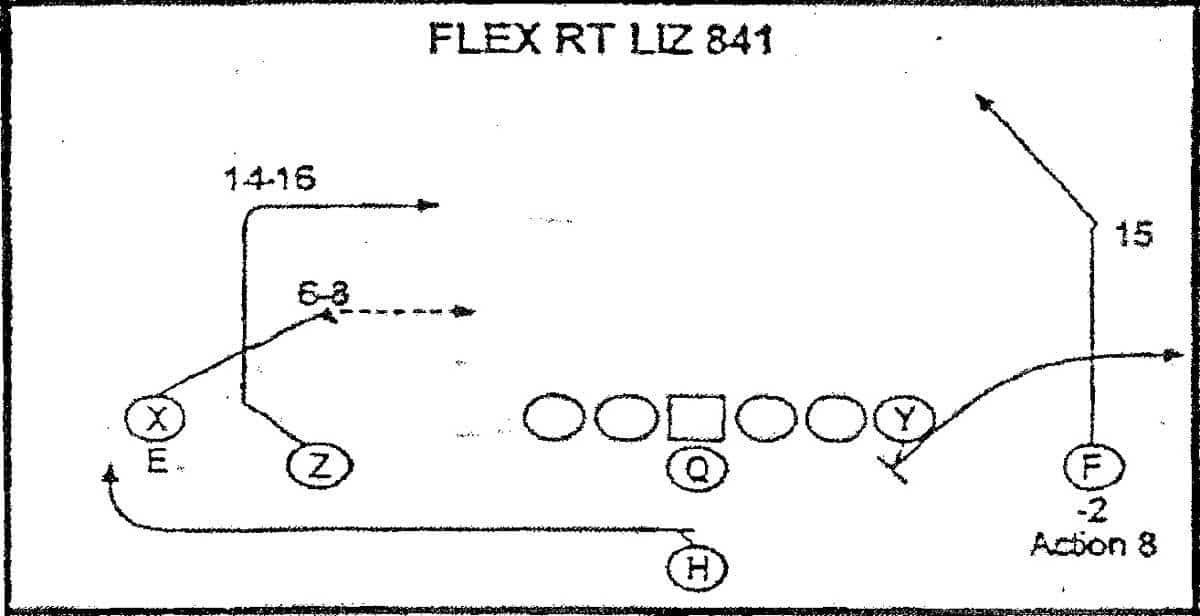
That concept was stolen from Walsh by Edwards at BYU, then stolen from Edwards by the Air Raid guys (again), with some slight tweaks to fit the needs of their system (again):
Mumme and Leach developed the Air Raid’s version of Shallow Cross — often just called “Shallow” in Air Raid terminology — to serve as a counter to how defenses were defending Four Verticals, a concept I broke down earlier this offseason:
LEARN A HOLGORSEN PLAY: Air Raid “Four Verts” and “Storm” Vertical Stretch Concepts
A look at Dana Holgorsen's favorite vertical stretch plays.
Mumme and Leach found that to stop the two interior vertical routes from the slots on Four Verts, defenses were dropping their second-level defenders down the hashes to block those throwing lanes, often by utilizing Cover 4 or “Quarters” coverages to wall off that throw to the seam vertical routes. Shallow became a way for them to attack that specific hash area with a route running right underneath the dropping defender to now create high-low conflict.
Holgorsen’s version of the play has largely remained consistent with the Air Raid’s rules.
The general set-up of Shallow is a short-depth crossing route at 0 to 3 yards from the line of scrimmage coming from one side of the formation, and a deeper, 10- to 12-yard “basic” or “dig” route coming from the other side of the formation. The two widest split-out eligibles will run deep vertical routes, and the back will release to the opposite side of where the shallow crossing drag route is running:
The key action of the play is to create a high-low conflict on whichever defender is aligned at the second level over the basic/dig-route runner, which is typically the Will linebacker (or most likely the Nickel in modern defenses) if run out of the traditional 2x2 set:
Against zone coverage, Shallow Cross makes this defender — who, keep in mind, is worried about walling off Four Verts up the field — responsible for covering two routes at once, with the shallow crossing route coming underneath him and the basic/dig route coming over the top of him. Whichever one he chose to cover, the other would theoretically be open for the quarterback to throw. Drop to depth or wall off the basic/dig, and the shallow route is open underneath:
Come up to the shallow route, and the Basic is breaking open behind you:
The back (the F in the diagrams above) releases to the opposite direction of the shallow route’s endpoint and can often get lost by the defense as it flows to the main action of the play as the third read. The two vertical routes outside the Shallow Cross action largely act as clearouts for the main action and potential shot options the quarterback can take against defensive alignments pre-snap.
The play only works as a counter off Four Verts if the basic/dig route from the Y looks identical to the stem of the vertical route on the Four Verts play. For this reason — and to force that Will/Nickel defender to declare their intentions — the dig/basic runner takes a vertical outside release on the Will/Nickel.
The Shallow route’s key traits are that it has to be “fast and flat.” Too deep and the Will/Nickel is able to cover both routes by hanging out in the middle no-man’s-land area. And if not on a dead sprint you won’t generate as much separation from the coverage defenders. Depth on the Shallow varies by coach; the original Air Raid play had the Shallow route running along the original line of scrimmage (with the idea the defensive line will push up the field and leave that space clear), but other coaches have put it as deep as 3 yards. Both Lincoln Riley and Holgorsen seemed to prefer their Shallow to be about 1 yard downfield, though, but Holgorsen stressed the route needed to be flat at whatever depth it’s run.
The quarterback’s eyes first go to the Will/Nickel aligned over the basic/dig route at the snap and the flat to that side: If that Will/Nickel player turns their hips and runs with the basic/dig route’s vertical stem (as they would to wall off Four Verts), the QB knows the shallow crossing route under them will be running open into their vision. If the Will/Nickel is aligned too wide at the snap for the dig/basic runner to get an outside release, or there’s a corner soft squatting outside, then the QB knows the shallow will probably not be open on the play. Houston doesn’t get the throw off here, but here is a rep Holgorsen said should have been thrown to the Shallow:
The Shallow is coming from the slot to the top of the screen, and the basic/dig from the slot at the bottom. You can see that player aligned over the basic/dig turn their hips and run upfield, opening up the underneath for the Shallow:
Air Raid QBs are taught to never pass up an open Shallow route on this play, and the ball is taught to be thrown to the Shallow player’s outside number on their jersey so that they can turn upfield and run.
If the Will/Nickel squats on the dig’s vertical stem and doesn’t drop, slow-plays it, or even comes up to wall off the shallow crossing route, it should leave a window to throw the basic/dig route behind them.
After running their 10- to 12-yard stem and making their cut into the middle of the field, the basic/dig route has options, too. If they see either of the Mike or Sam linebackers dropping into their path across the field, they can settle up in the “open grass” on a quasi-curl route, or if those LBs remain down they can continue running across the field.
If the Mike and Sam have dropped to the basic/dig, then the back to the opposite side of the play should have some open space to the opposite flat.
And before any of that, in the general teaching of the play, the quarterback’s first evaluation is to check the safeties before the snap. If the safeties are closer to the line of scrimmage or the QB feels he has a matchup advantage, he can look to one of the deep routes at the snap. The play is often “tagged” with a post route over the basic/dig, creating a de-facto Mills concept that is also very effective against Quarters coverage or a safety cheating up on the basic/dig:
Against man coverage, the shallow route gives the wide receiver a chance to use their speed to run away from their man-coverage defender horizontally across the field, similar to Mesh. The break on the basic route at 10 yards also represents a chance for that route to “snap off” against man coverage and generate some separation for a throw. The outside vertical routes could also be thrown against man. It’s just whomever can win.
Shallow Cross is also an all-five-eligibles concept, meaning only five players can stay in for pass protection and the QB will have to throw hot against any more than five rushers by the defense. The Shallow is taught to look for the ball right as they cut across the field in case the quarterback has to throw hot, and Holgorsen said in clinic film he also teaches QBs on Shallow Cross to gain depth against the blitz to buy time (essentially just backpedalling at the snap) and attempt to throw the Shallow route, as it can often lead to a gash against the weakened coverage from extra rushers. Here was one such example from his clinic where he said QB Case Keenum did a good job of buying time to get the Shallow off vs. the blitz:
The play is primarily run out of 2x2 doubles with the slots as the Shallow and basic/dib players, but other versions of the play see the X and Z receivers as the Shallow runners, with the slot players replacing them as the vertical stretch options:
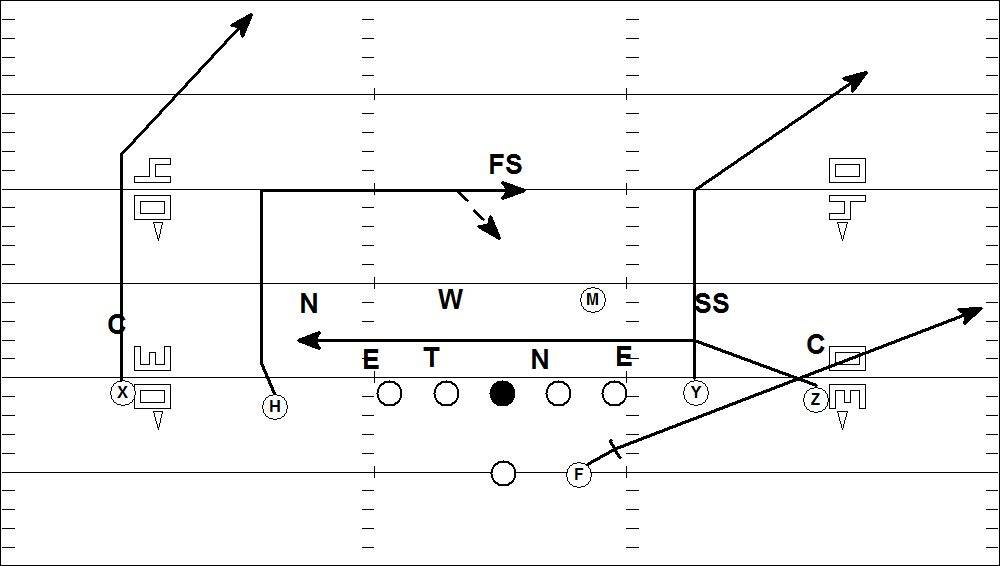
The play can also be run out of 3x1 formations with tweaks, and it’s easily tied to play action.
It’s worth noting that while both Mesh and Shallow Cross are popular man-coverage beaters in wider football, both have answers and can be effective against zone coverage, too. A lot of these Air Raid concepts are Swiss-watch level designed to have answers against any coverages, and Mesh and Shallow Cross are no exceptions. I bet we see both this year in a variety of circumstances.
HOLGORSEN’S SHALLOW CROSS VARIATION
Holgorsen predominantly ran Shallow Cross the classic Air Raid way, but he also had a few wrinkles off it.
One was that against likely man coverage he often turned to a different version of Shallow Cross, a popular variation where the basic/dig route is converted to a 10-yard sit, like in Mesh Wheel. Here’s an example of “Shallow Cross Sit” from an NFL playbook:
This version of the play is more of a middle ground between Mesh and Shallow Cross, with the stretch less exclusively on the Will/Nickel and more about finding whatever open space is at the second level through a horizontal and vertical stretch. The Shallow Route in this version is at 4 to 6 yards depth, and continues running vs. man and settles vs. zone, like in Mesh, and the sit route is the answer if the defense horizontally runs with the Shallow and can also cause traffic. Holgorsen was running this version of the play frequently at Houston in 2023.
The other wrinkle is that Holgorsen likes to run screens off Shallow Cross, with the back going to the opposite side of the Shallow route becoming a screen player as the defense focuses on the crossing route and dig to the other side of the formation. That flat route from the back is often forgotten about in the standard version of the play, and releasing linemen in front of them as screen blockers can make it even more effective:
Thanks, as always, for reading.
The real football … is near. If you’re new here, or just returning for the season, welcome. I’ve got several long-form pieces up from this offseason on more of these Holgorsen plays and on individual film evaluations of new Nebraska players in key roles. This post is free for everyone to read, so if you know anyone who would enjoy the blog before kickoff, please feel free to share it!
It comes out to an even higher level of usage when you consider one of Holgorsen’s four games was against one of the heaviest zone coverage teams in the nation in Iowa.
Not meant as a diss on Fidone: He showed plenty of “tough ass,” as Holgorsen would say, as an in-line blocker. He just wasn’t as physical at setting the picks as Boerkircher and Lindenmeyer.
You could also make the case that the “proper read” on the USC clip would have been to throw the sit, as USC has a zone dropper from the line going straight to the Shallow’s path. But because it’s man coverage and because the Shallow does have an opening and is second in the progression I believe the coaches would have wanted him to go there with the ball. It’s just to point out that it’s not always so black and white on the reads.



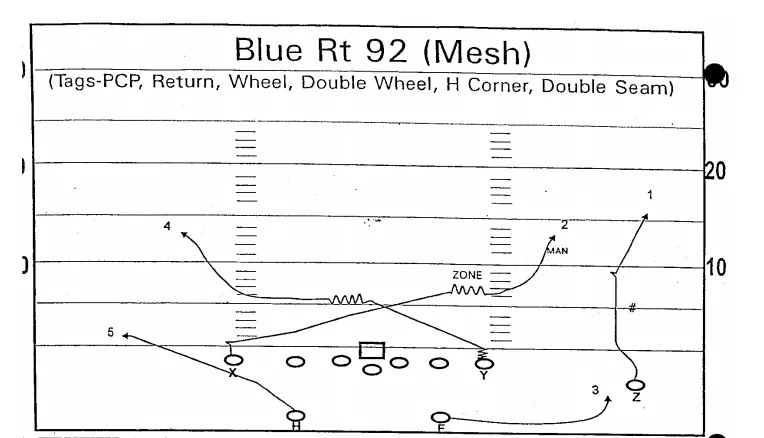

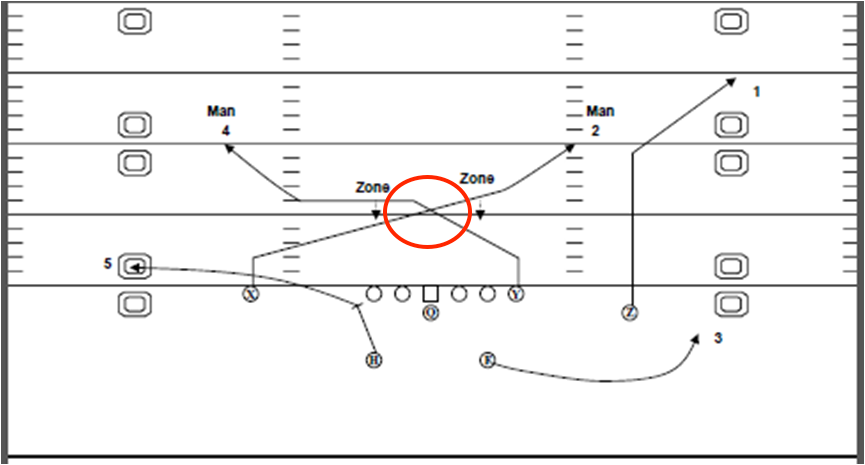
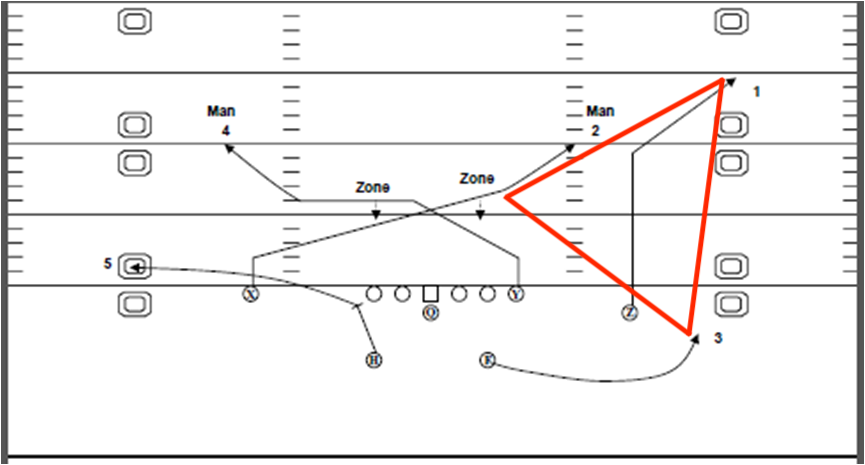
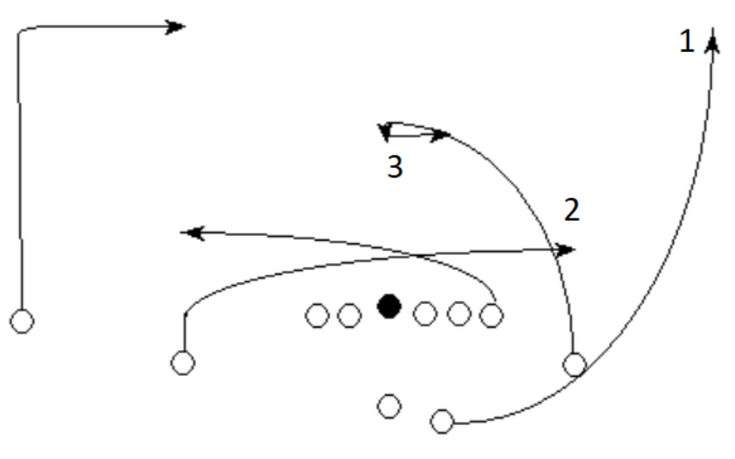
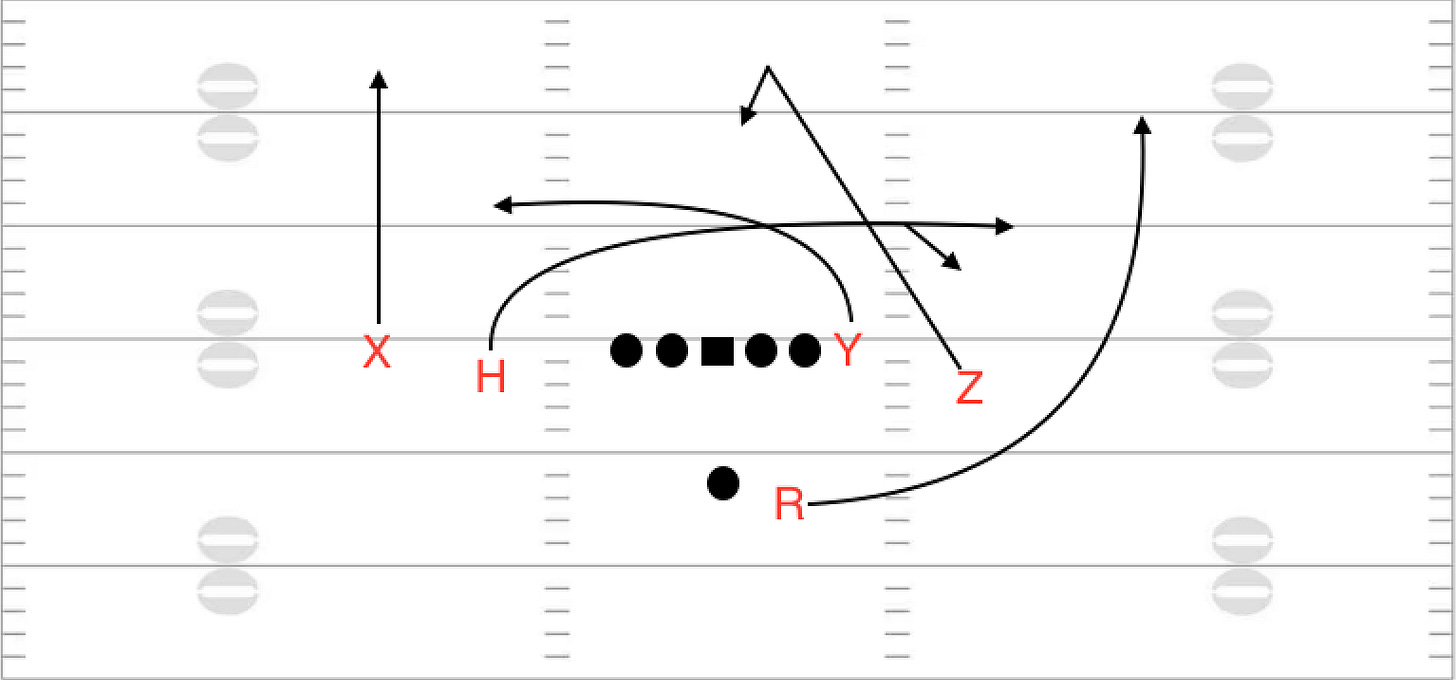

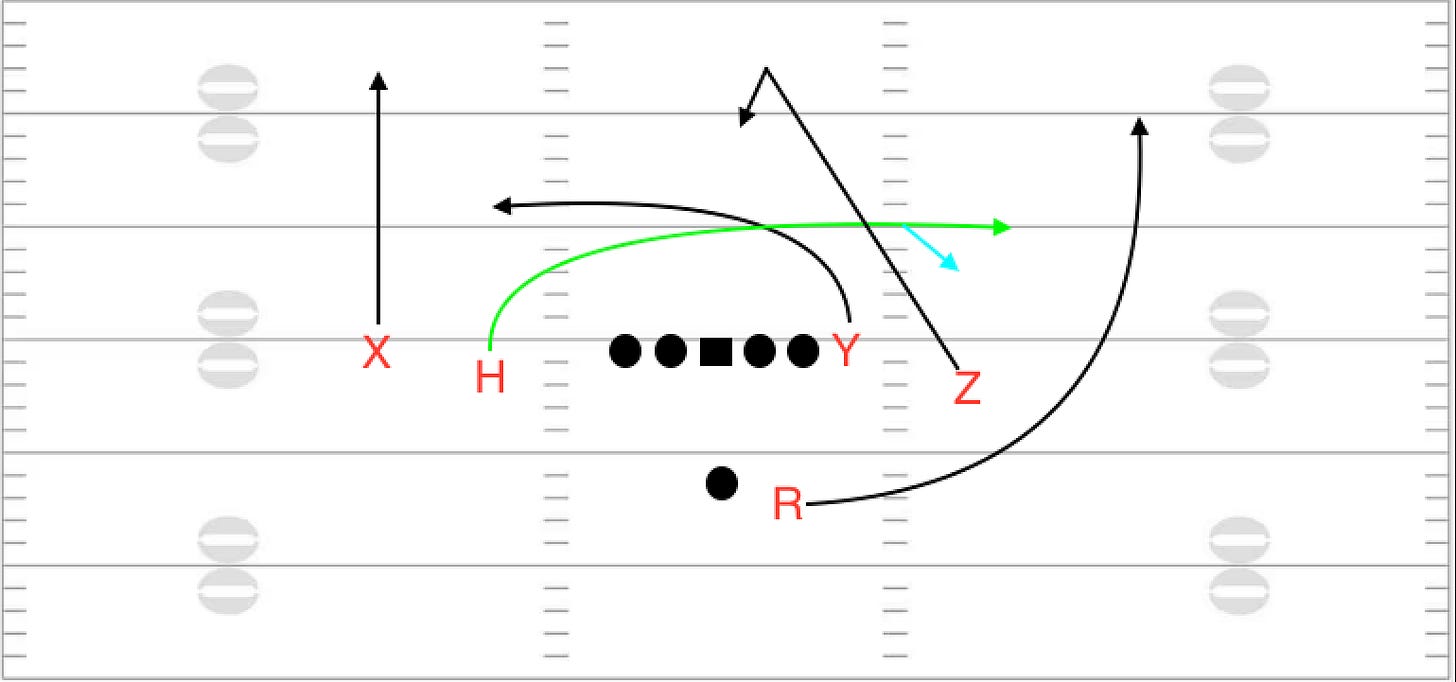
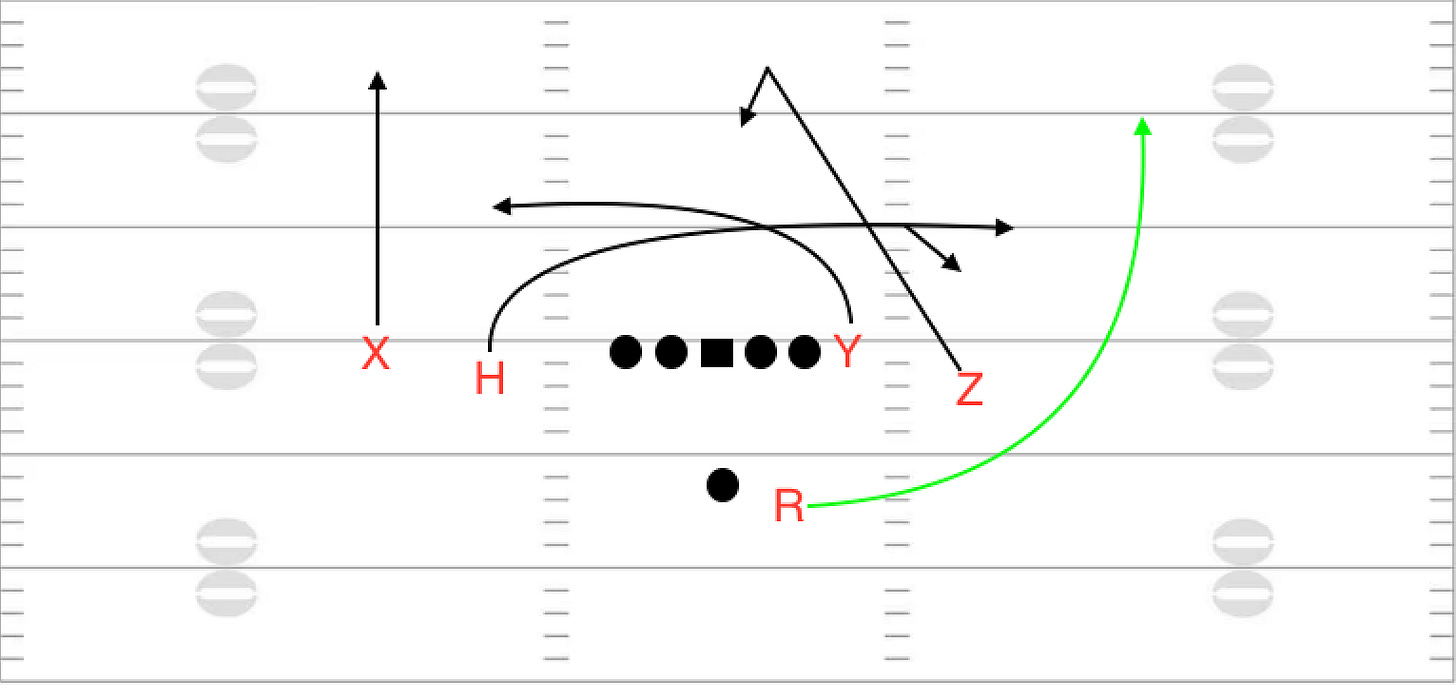
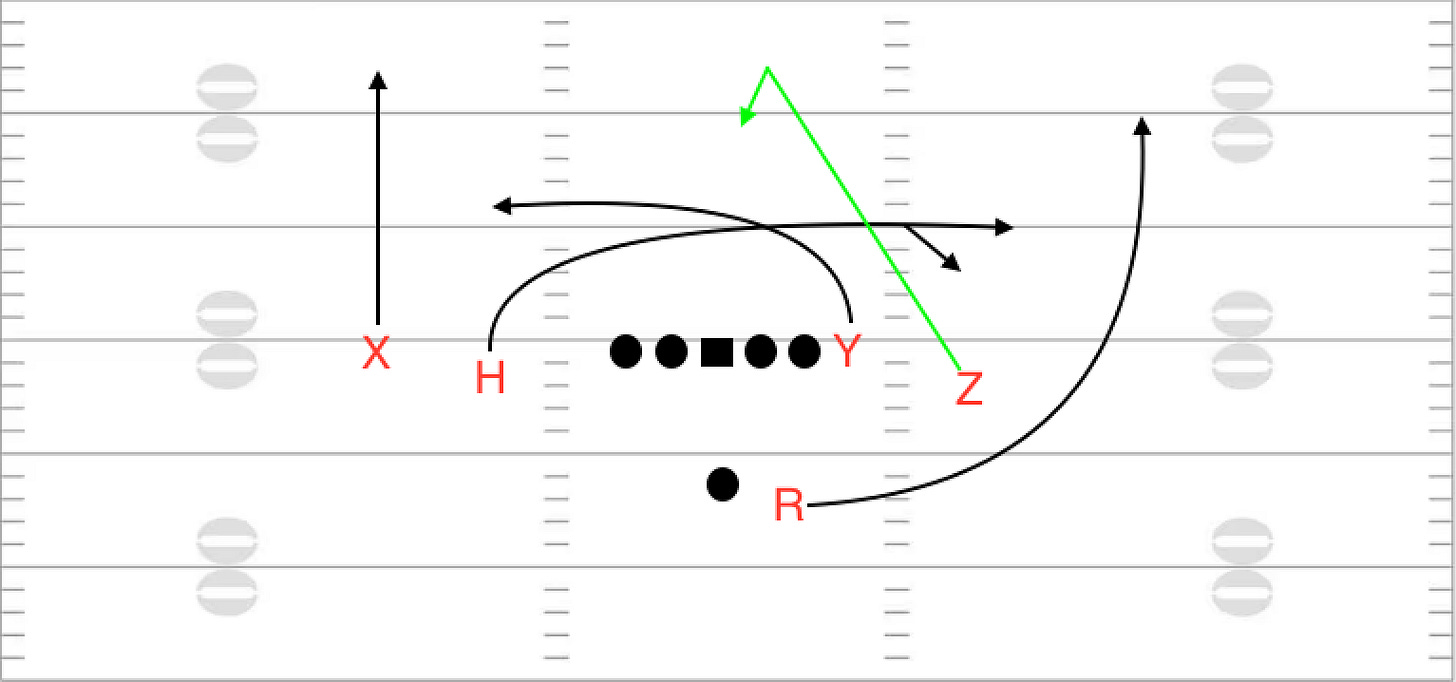
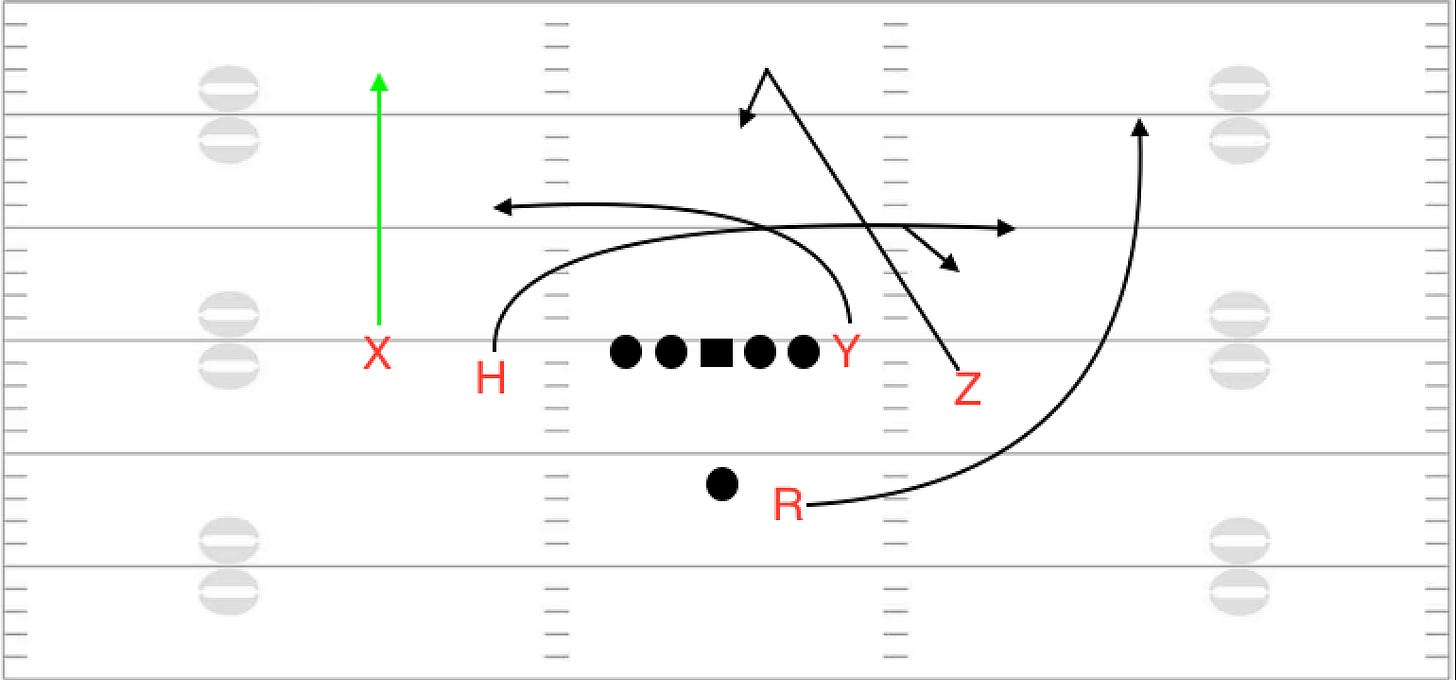
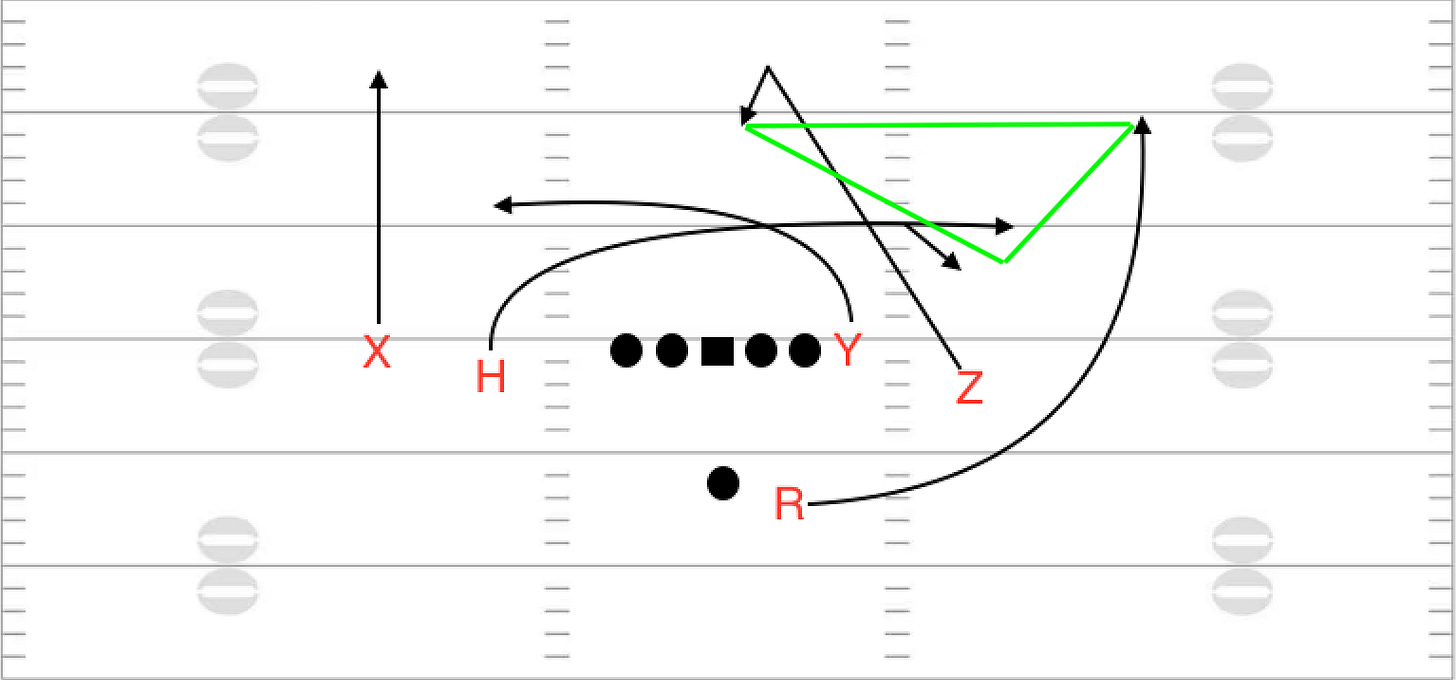
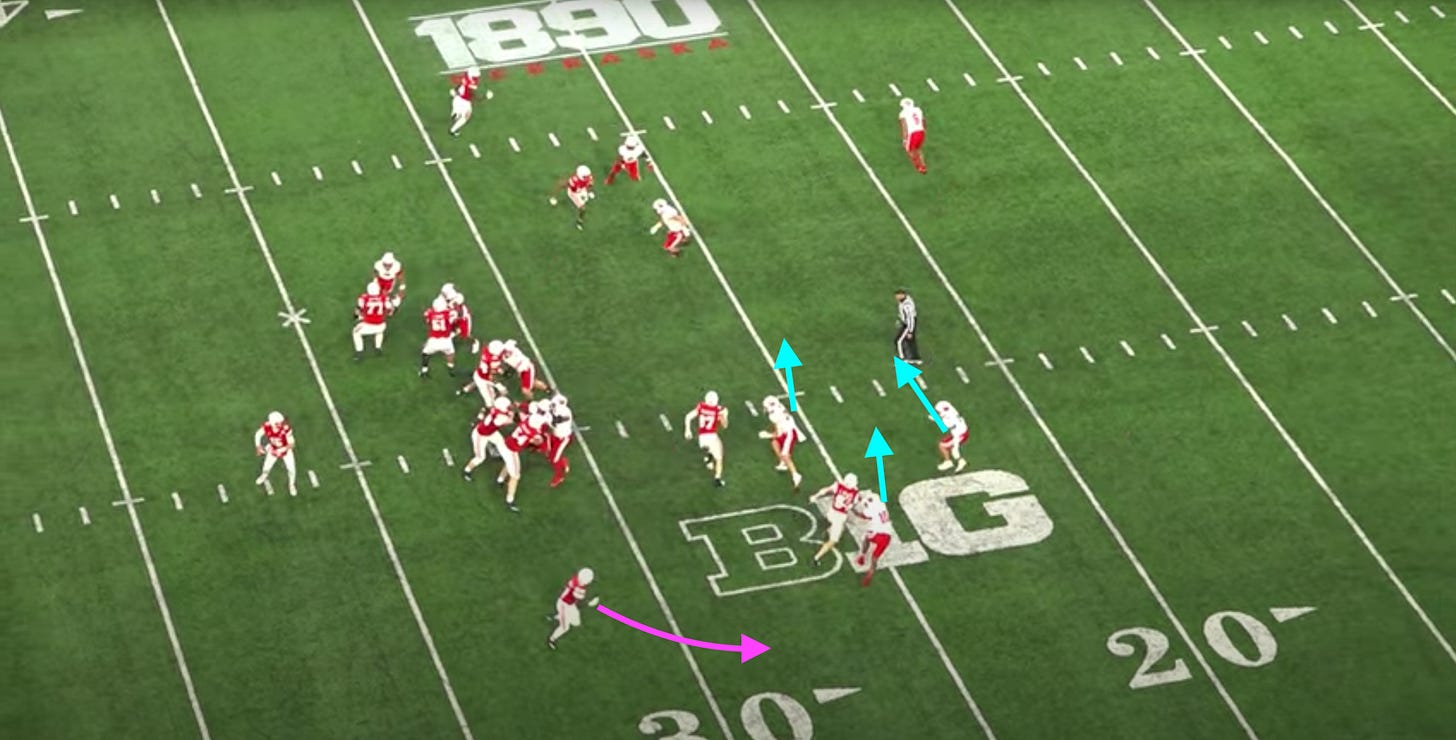
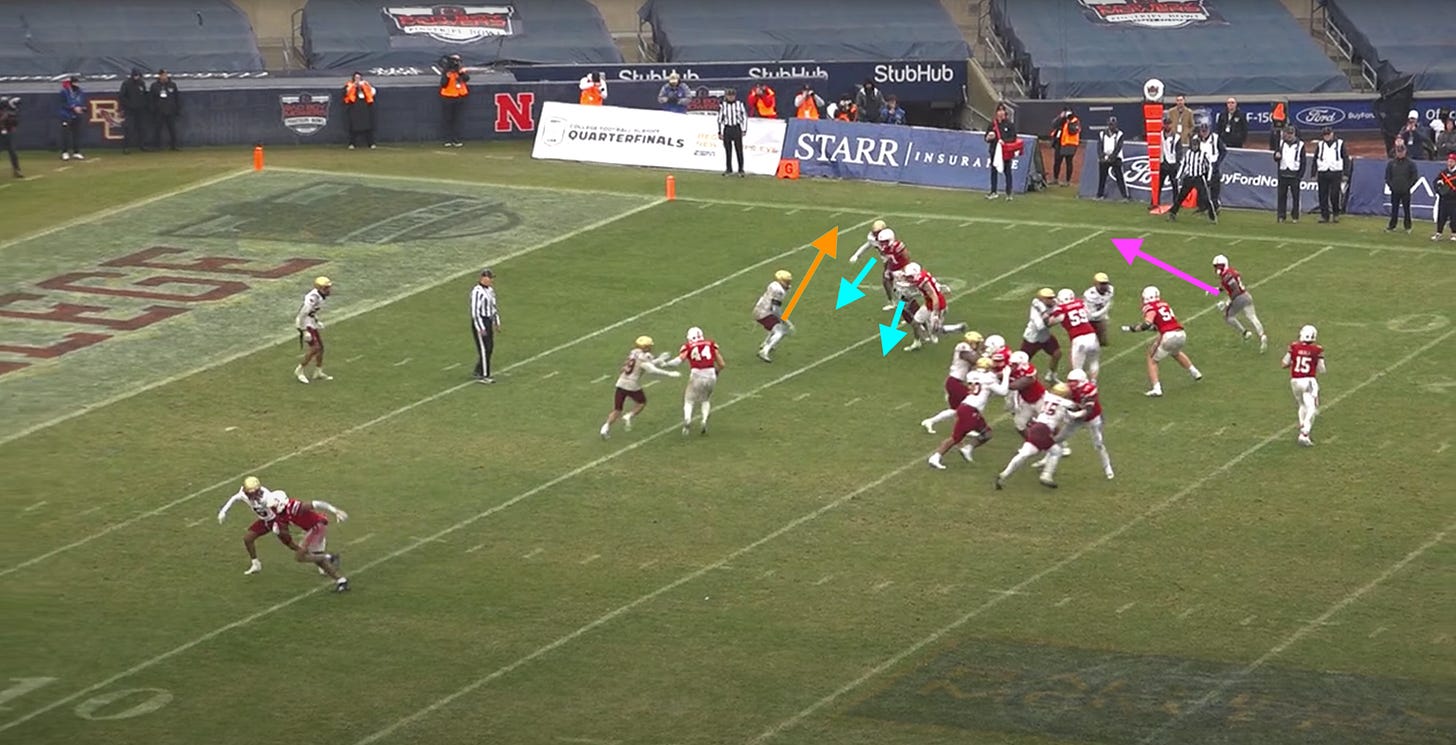
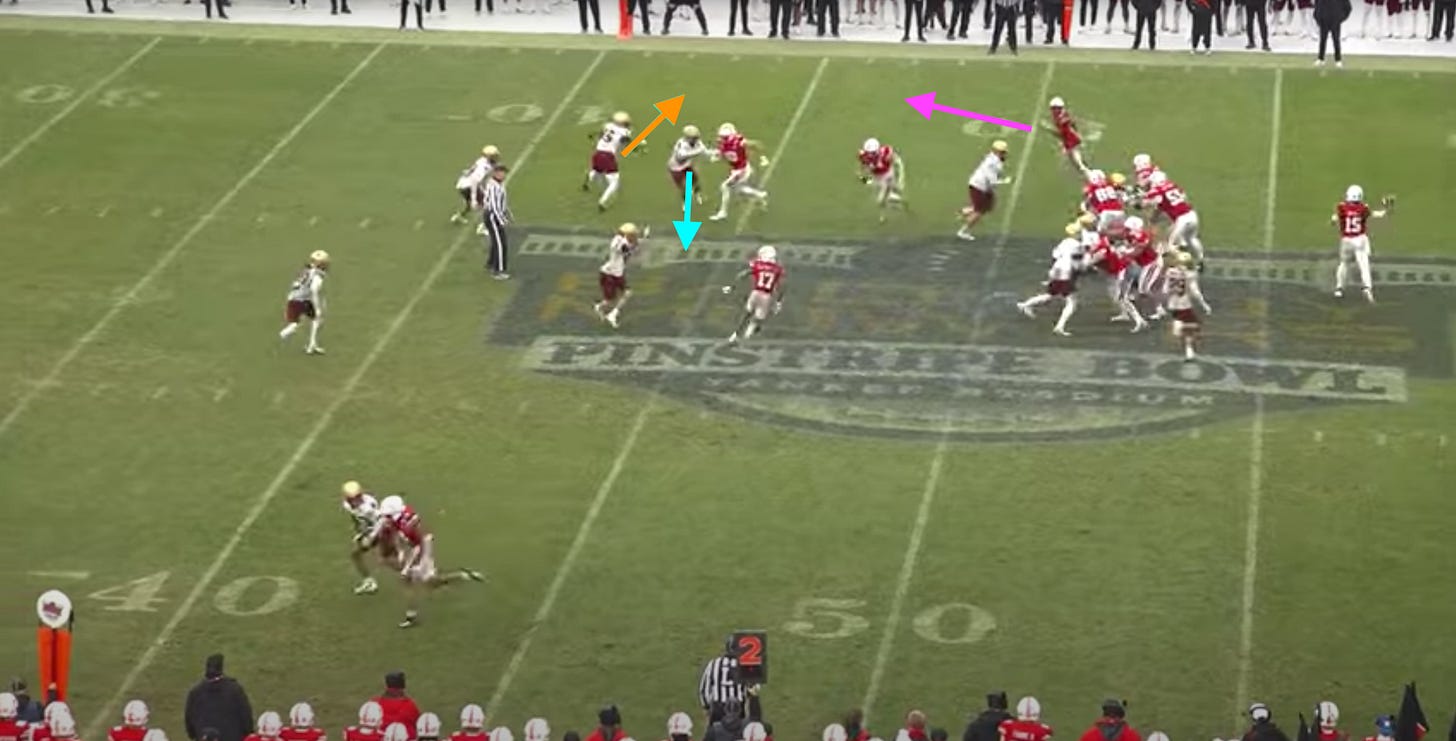
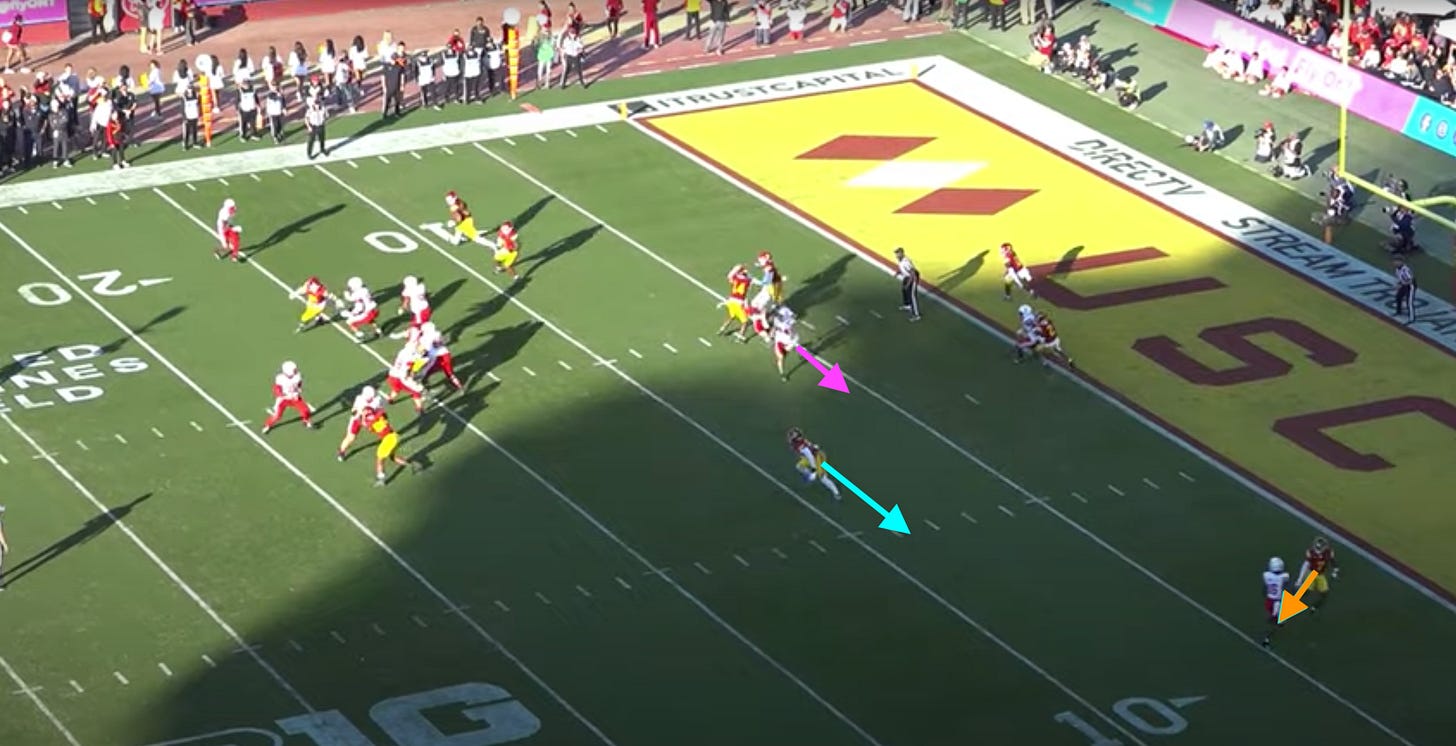
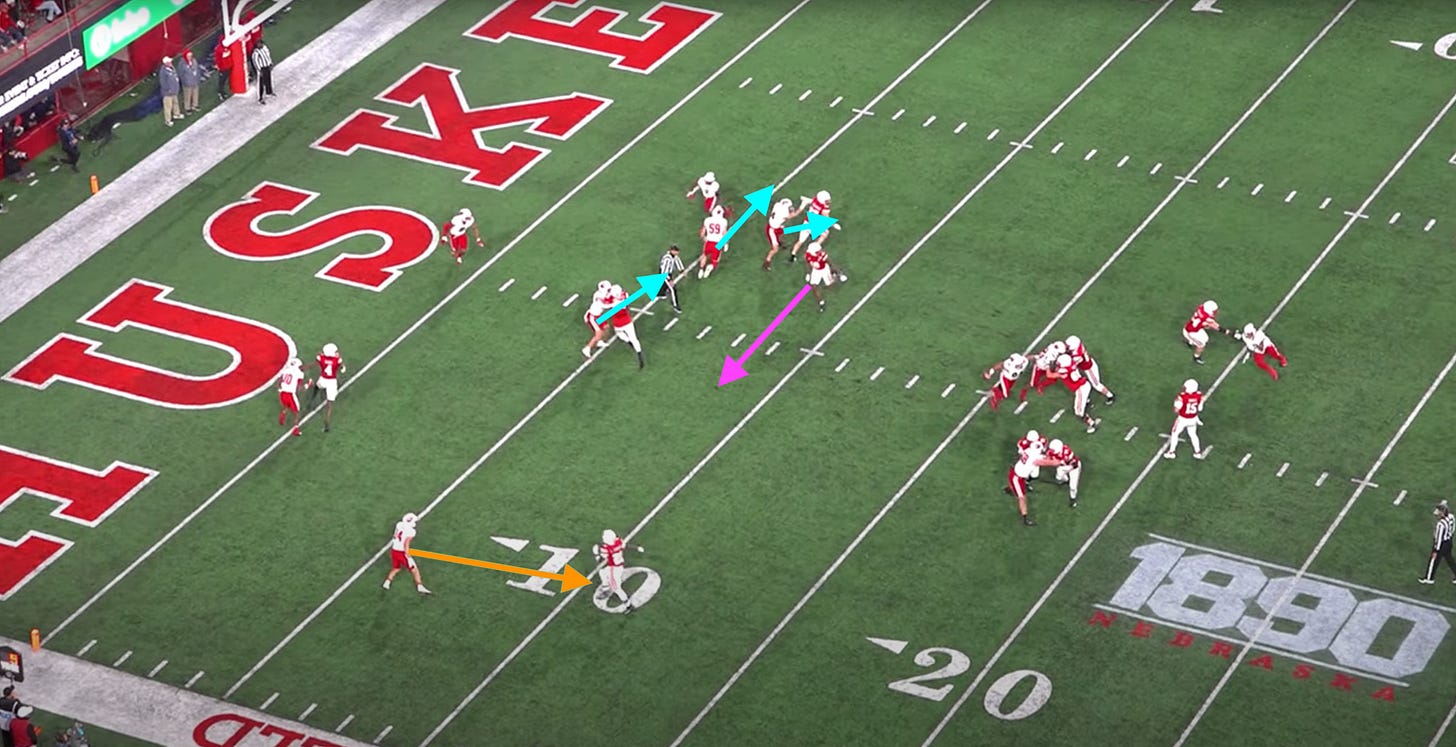
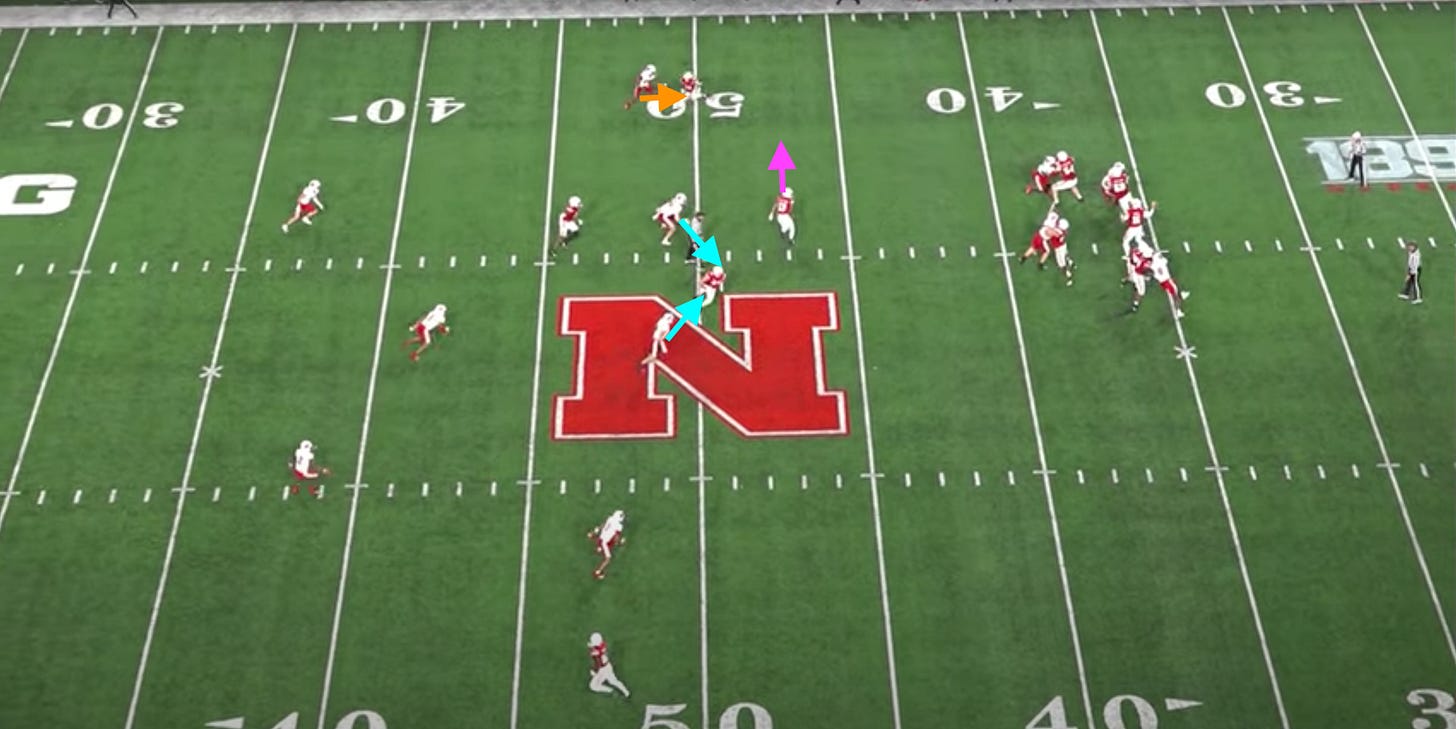
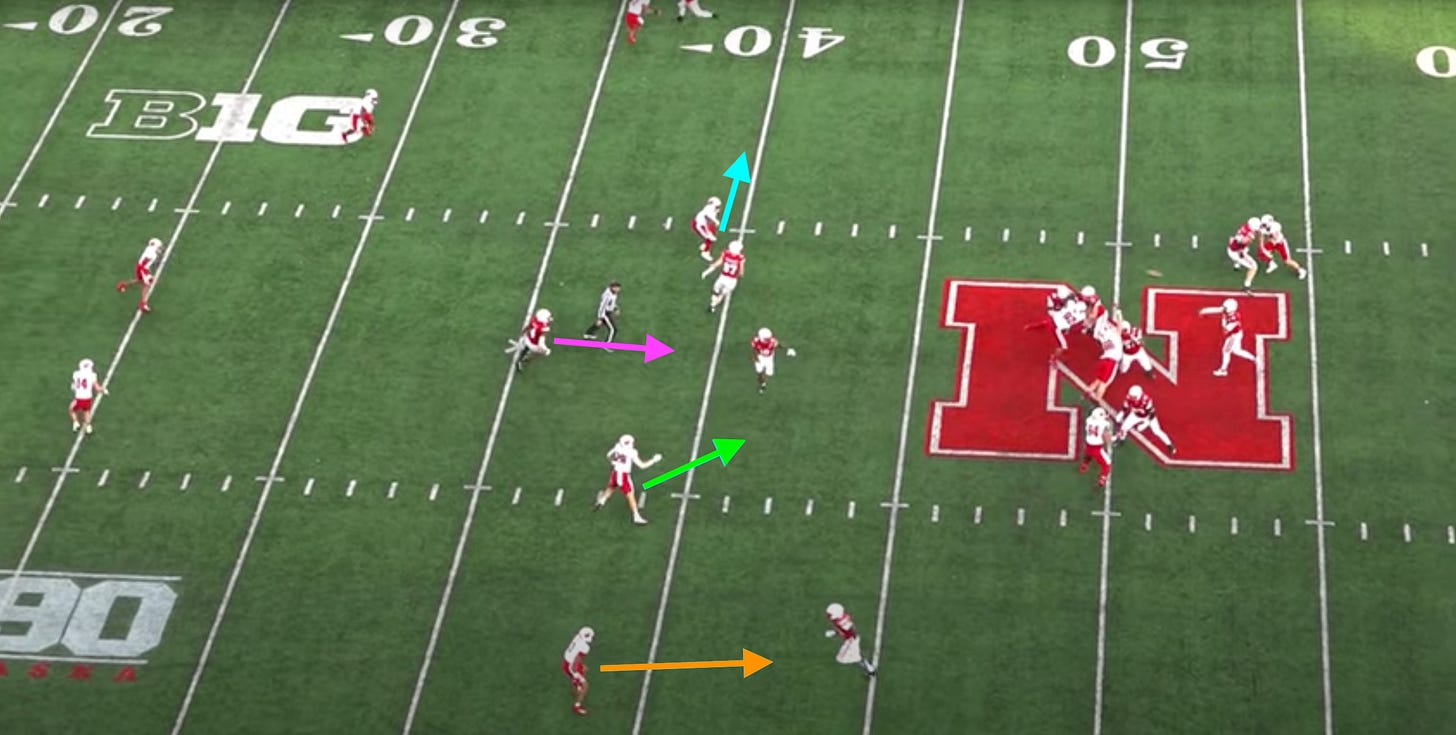
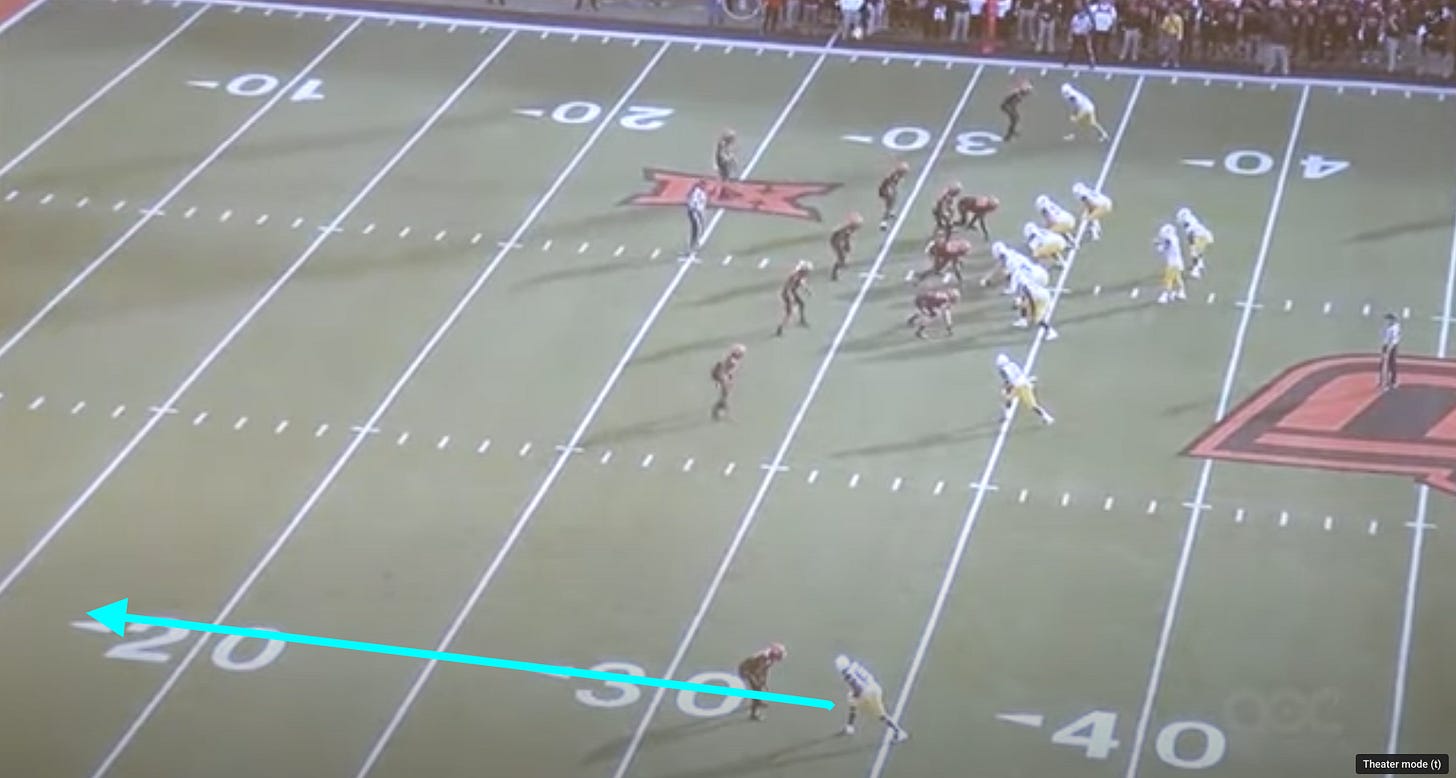
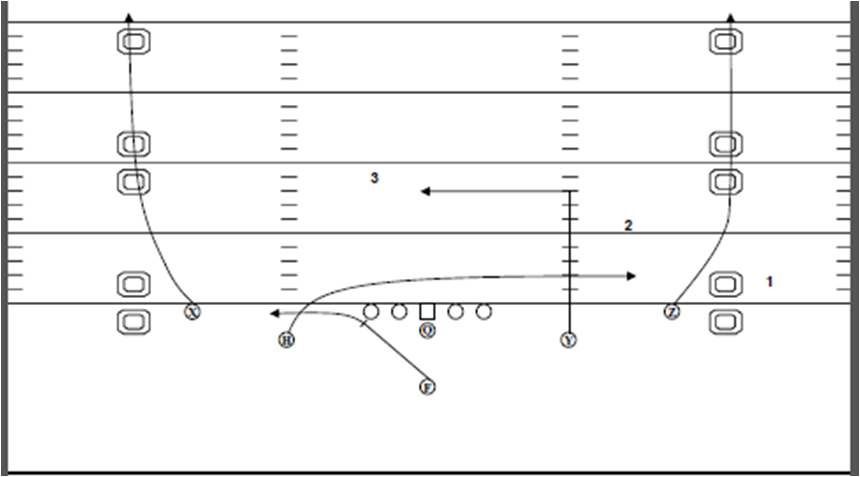
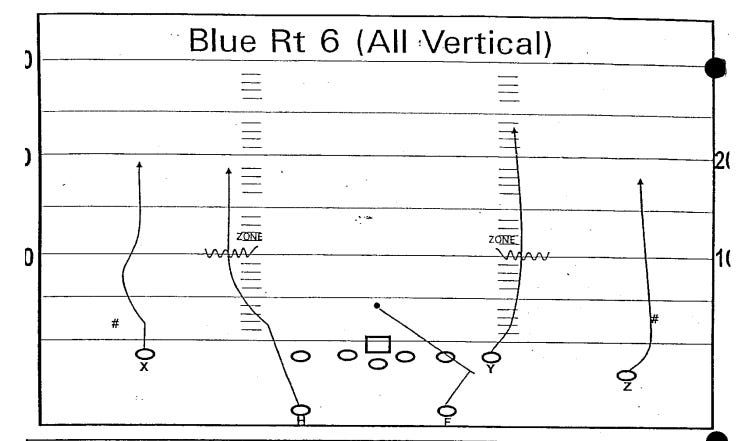
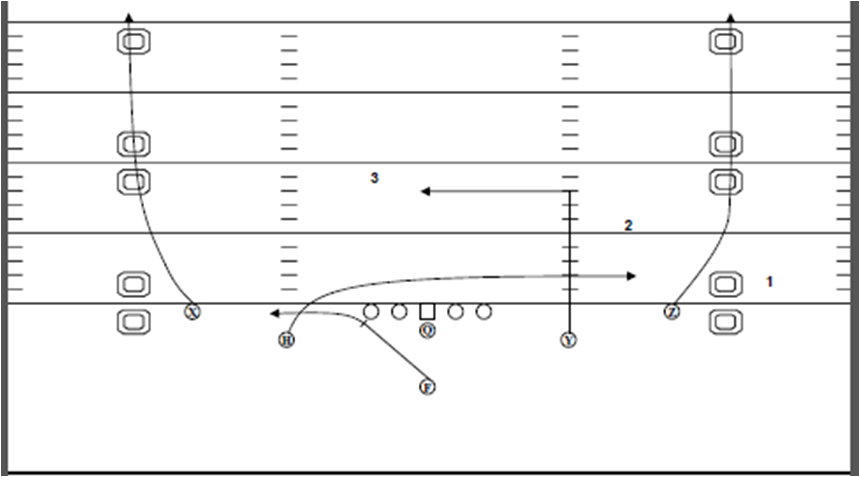
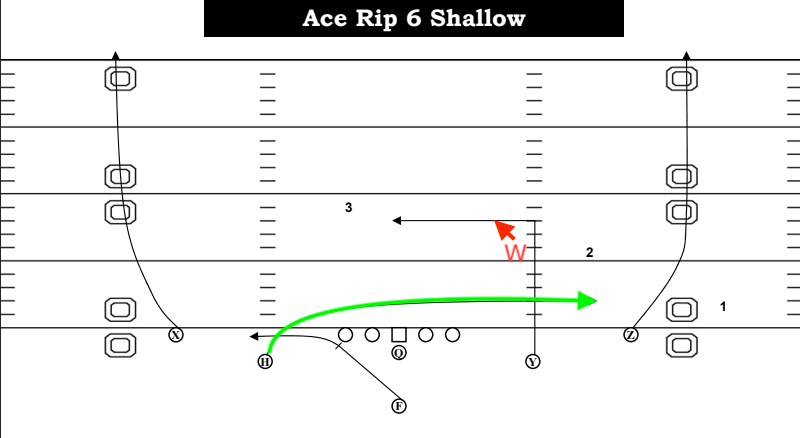

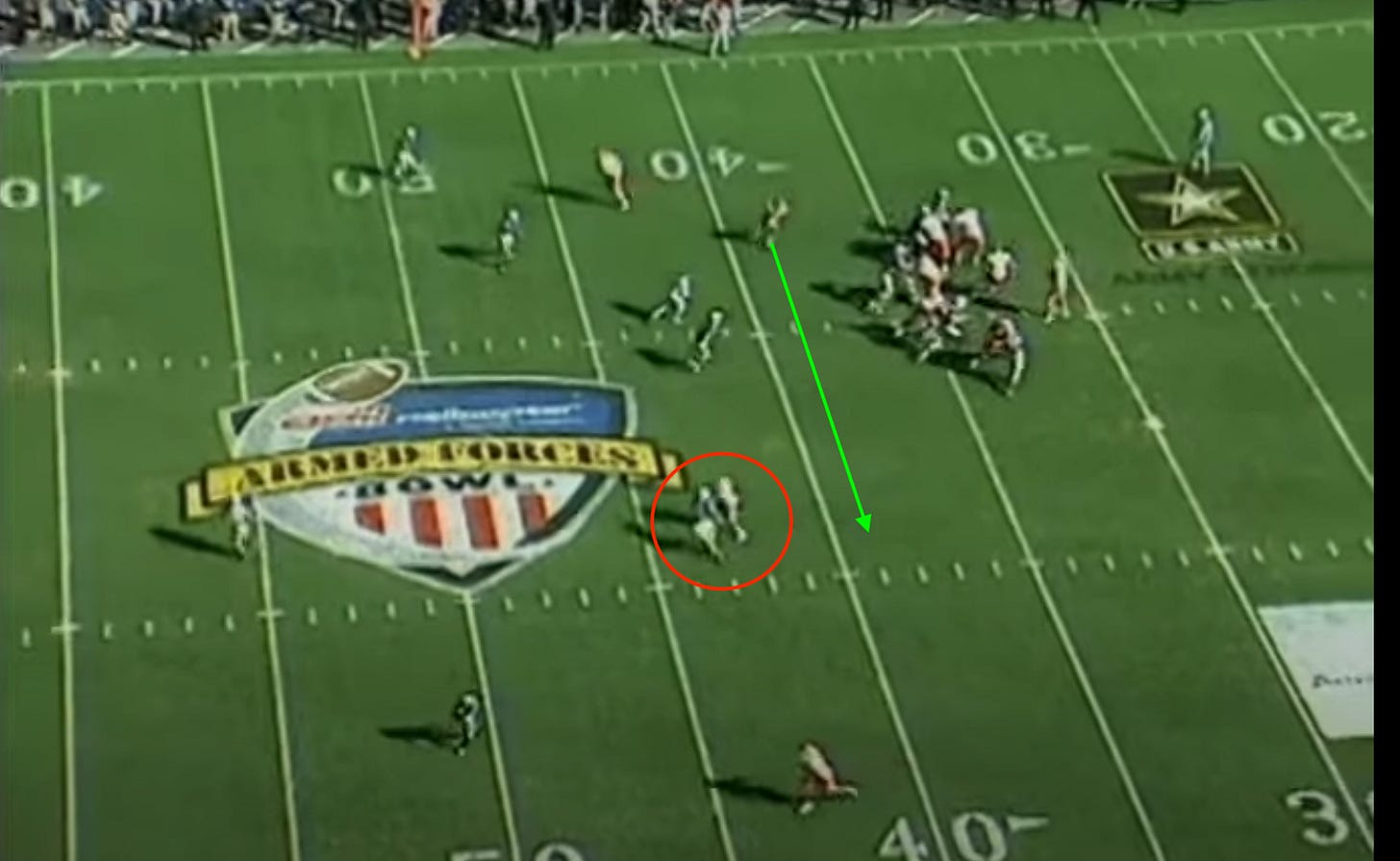
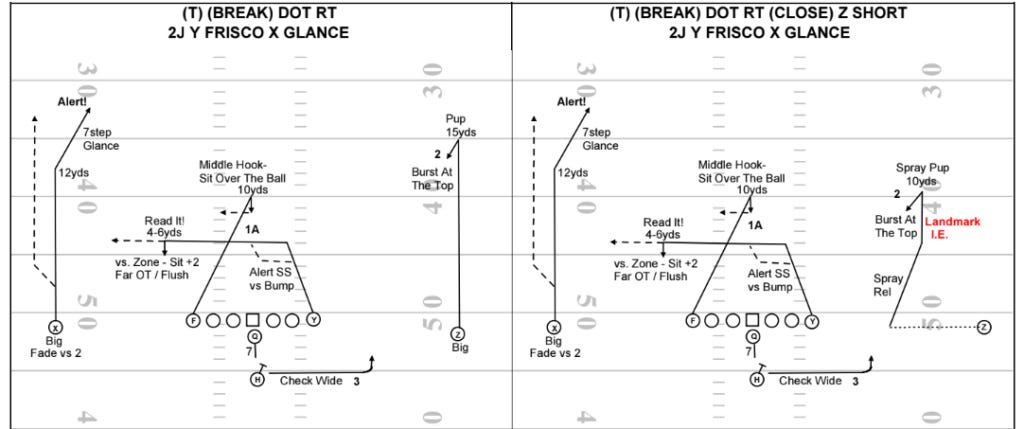
Going to use this write-up to rack up some wins on NCAA 26 running mesh and shallow concepts to bridge the gap for the next two weeks haha.